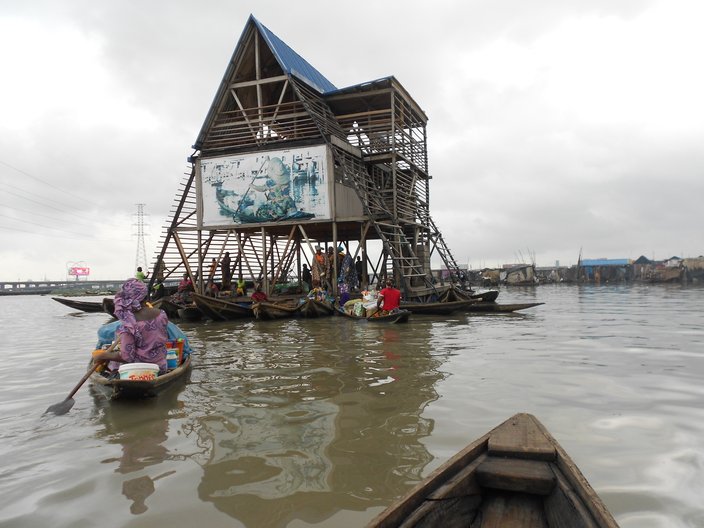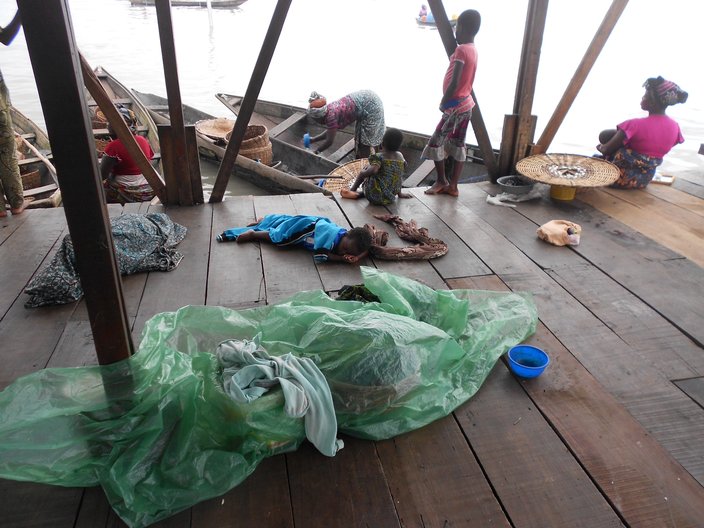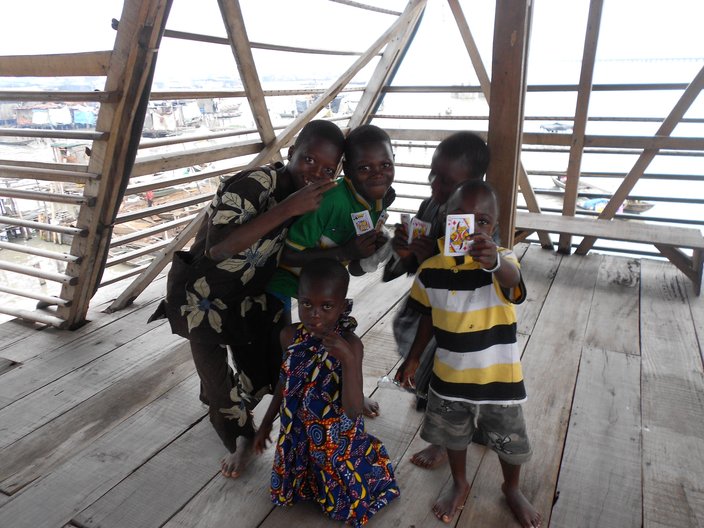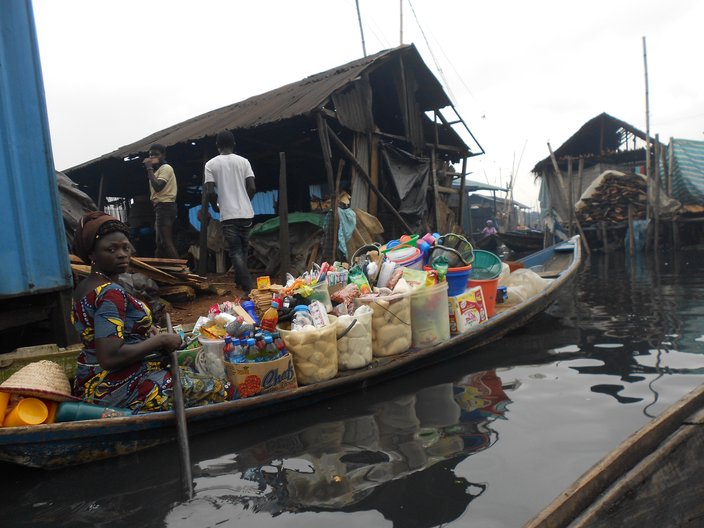29 July 2014
by Vicky Richardson
Visit to Makoko School, Lagos
Makoko school is easy to spot from the bridge linking Lagos Island with the mainland. The three storey A-frame, a floating school, is the tallest structure on the water and its blue cladding stands out like a beacon.
The project was initiated and designed by Kunle Adeyemi of NLÉ a Lagos-born architect who has risen to fame rapidly since the Makoko project was finished in 2012 and widely talked about around the world. The model of the school appeared in our Atlas of the Unbuilt World exhibition in June 2013 as part of London Festival of Architecture.
This summer Adeyemi was on the jury for the Golden Lion at Venice Architecture Biennale, and in the autumn he will run a programme on African water cities at Cornell, alongside developing designs for a floating city in Lagos for a forthcoming show at MoMA.
Our rendezvous with Adeyemi was a petrol station on the main road, from there we drove into Makoko, a community that is part land-based and part-floating. A short walk along an alley, dodging puddles and piles of garbage took us to the water’s edge. Around us people of all ages were going about their business, or sitting outside talking and listening to music. Women ferried in parcels of frozen fish, shipped in from County Donegal. One of the local industries is barbecuing processed fish, which is then sold around Lagos.
From a timber hut, we stepped very tentatively into a canoe, taking care to stay in the centre of the raft. The water was murky and greenish brown – everything ends up in it, and I didn’t like the thought of falling in.
Adeyemi is not romantic about life in Makoko. It’s tough, people have very little to survive on and there is no infrastructure – it’s not a lifestyle he advocates for anyone. But he does believe in the principle of living on the water and compares Makoko to other worldwide water cities such as Venice or Amsterdam. Living on the water does make sense if you have few resources – the water provides a means of transportation, a cleansing system, and a food supply. But it also means that people are at the frontline when there are floods or rises in sea level.
The water is one of the few parts of Lagos where you don’t need permission to build. This has its advantages, but Adeyemi has been fighting to get official approval for the Makoko school because he sees it as a prototype. Once the design has been approved it could be given to communities as a manual for people to build.
The system is very simple and the structure consists of just nine different types of timber. Adeyemi and his assistant Mohammed are still perfecting some of the details such as the anchoring system and the cladding, but they hope that soon the community will start using it for classes. Already it is a valued place, with women perching on the edge for fishing and children playing on its smooth timber platform. The first floor is a classroom, and the second floor is a wonderful open space, with cool breezes coming from the sea and a fantastic view. It will be an inspiring place for children to learn from and look out over the city.
Category
Travelogue
Location
Nigeria




